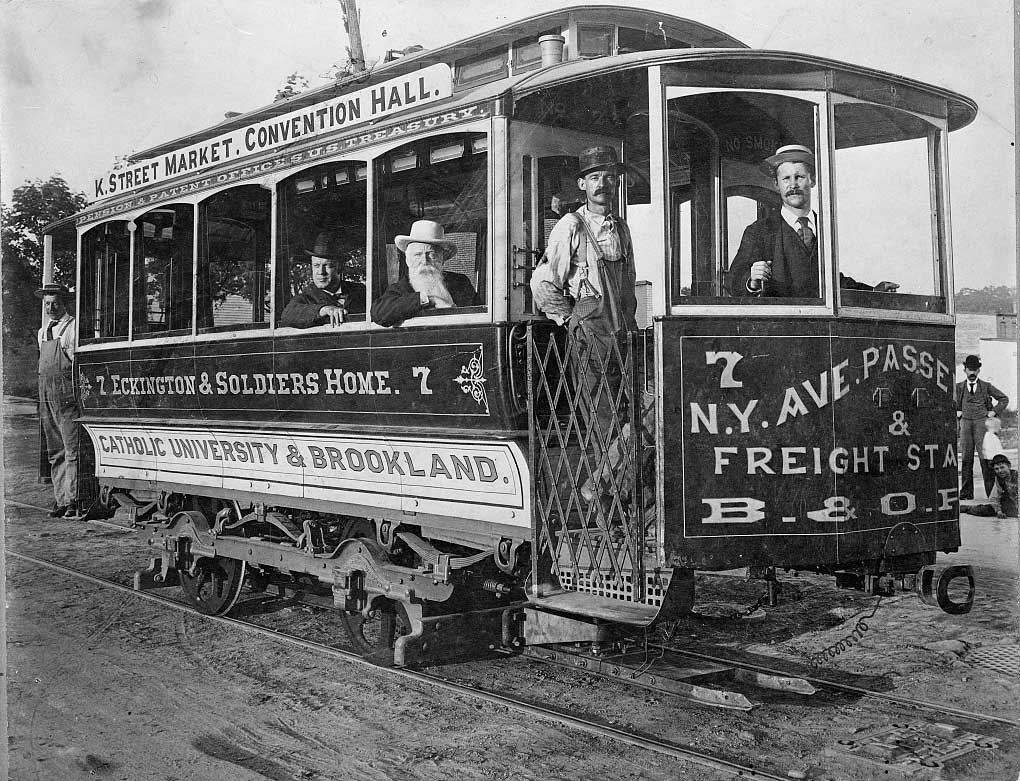Technology and the economy

Street Car Washington DC
The later part of the 19th century was a period of rapid technological progress; progress that was quickly adopted by industry and consumers. Beyond the railroads, which had the greatest impact, other inventions effected American growth. During this period, the electric light bulb was invented and commercialized and the phonograph was invented as well.
Of course, another major invention during this period was the telephone. When Alexander Bell invented the telephone, Western Union (the telegraph company) was seen as an unassailable monopoly — with 12,000 telegraph offices, 400,000 miles of telegraph wire, and annual profits of $7,000,000. Western Union scoffed at Bell's invention, calling the telephone "a hobby". However, some of the most important inventions were incremental innovations that came together on the factory floor and resulted in a massive increase in factory productivity. Small factories became big factories and became every more productive. New machines allowed one employee to turn out 300 boots a day. With the invention of new, increasingly efficient equipment, one factory in Massachusetts produced more shoes in a year than all 32,000 bookmaker in Paris. There were fewer factories, producing more goods, with less employees. It should be noted that factory employment grew overall throughout this period, but production outpaced employment gains.
New Technologies began to transform America. Electric street cars were introduced toward the end of the century. This allowed cities to expand dramatically. In 1890, 1,260 miles of street car tracks had been electrified. By 1903 that number of street car tracks had tripled.
